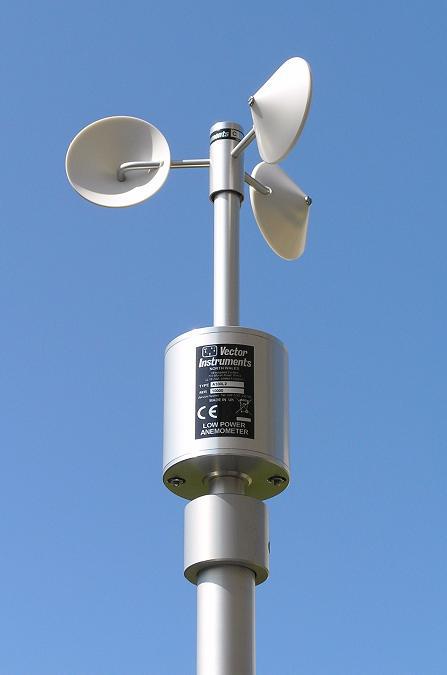Expert Tips for Calibrating Your Anemometer for Optimal Efficiency
Expert Tips for Calibrating Your Anemometer for Optimal Efficiency
Blog Article
Anemometers Unveiled: Understanding Their Significance in Environmental Monitoring and Safety Measures
The role of anemometers in ecological surveillance and precaution is typically undervalued, yet their relevance is indisputable. These instruments have a long history rooted in scientific inquiry and technical innovations, developing to end up being necessary devices in different areas. From weather forecasting to aviation safety, anemometers play an important role in providing exact data that informs decision-making procedures and improves overall safety and security. Comprehending the complexities of anemometers introduces a globe of vital insights that are basic to our understanding of the atmosphere and the measures we take to ensure safety and security.
History of Anemometers
The development of anemometers can be mapped back to the ancient people where rudimentary wind determining devices were very first made use of. These early wind dimension devices laid the foundation for the advancement of extra sophisticated anemometers gradually. Among the earliest known anemometers was the hemispherical cup anemometer designed by Leon Battista Alberti in the 15th century. This design consisted of 4 hemispherical mugs that collected wind energy, supplying a dimension of its intensity based on the speed of turning.
Over the years, improvements in modern technology led to the development of even more contemporary anemometers, consisting of ultrasonic anemometers and laser Doppler anemometers, using boosted precision and efficiency in measuring wind speed and instructions. The background of anemometers showcases an impressive trip of advancement and development in the area of weather forecasting.
Sorts Of Anemometers
Throughout the area of weather forecasting, different types of anemometers have been created to properly gauge wind rate and instructions. One of the most usual kind is the mug anemometer, which contains three or 4 mugs installed on horizontal arms that revolve with the wind. As the cups rotate, the rate at which they rotate is straight proportional to the wind speed. An additional extensively used kind is the vane anemometer, which features a tail or fin that straightens itself with the wind instructions. This alignment allows the tool to figure out the wind instructions. Sonic anemometers utilize ultrasonic signals to measure wind rate and direction precisely. They are commonly made use of in research applications as a result of their high accuracy. Hot-wire anemometers run based on the concept that the cooling impact of wind on a warmed wire is symmetrical to the wind speed. These anemometers appropriate for measuring reduced wind speeds with high accuracy. Each sort of anemometer has its toughness and is picked based upon the details requirements of the tracking task at hand.
Applications in Meteorology
Having gone over the numerous sorts of anemometers made use of in meteorology for measuring wind speed and direction, it is important to discover their functional applications in the area. Anemometers play a crucial role in meteorology by providing accurate and real-time information on wind problems (anemometer). Meteorologists utilize anemometers to check wind rate and instructions to anticipate weather patterns, issue warnings for serious weather occasions like storms, tornados, and twisters, and assess climatic problems for air travel safety
In meteorology, anemometers aid in recognizing local and neighborhood wind patterns, which are crucial for anticipating weather adjustments and figuring out climatic trends. These tools are additionally utilized in research to research microclimates, metropolitan warm islands, and air contamination dispersion. In addition, anemometers are utilized in agriculture to maximize crop monitoring methods, such as irrigation and chemical application, based on wind problems.
Significance in Aeronautics Security
An important aspect of making certain air click here for more travel safety and security depends on the meticulous tracking of wind problems utilizing anemometers. Anemometers play an important role in aeronautics by offering real-time information on wind speed and instructions, assisting pilots in making notified choices during flight, take-off, and touchdown. Solid and unforeseeable winds can significantly influence aircraft procedures, making it crucial for air travel authorities to depend on exact wind dimensions to guarantee the safety and security of passengers and team.

In the vibrant environment of air travel, where also minor modifications in wind rate and direction can have extensive results, anemometers stand as important devices for promoting secure and secure flight.
Duty in Environmental Research
Anemometers play an important duty in ecological study by giving crucial information on wind speed and instructions. By accurately measuring wind characteristics, anemometers help researchers assess the movement of contaminants in the air, examine the effect of commercial exhausts, and forecast the spread of impurities in the setting.


Conclusion
In verdict, anemometers have played an essential duty in environmental monitoring and safety and security measures. Understanding the relevance of anemometers is vital for why not try here accurately determining wind speed and direction, which is important for predicting climate patterns, guaranteeing secure air travel procedures, and conducting ecological studies.
One of the earliest well-known anemometers was the hemispherical cup anemometer designed by Leon Battista Alberti in the 15th century. Over the years, developments in technology led to the growth of more contemporary anemometers, consisting of ultrasonic anemometers and laser Doppler anemometers, providing raised precision and efficiency in measuring wind rate and instructions. Hot-wire anemometers operate based on the concept that the cooling result of wind on a heated cable is symmetrical to the wind speed. Meteorologists why not look here utilize anemometers to monitor wind speed and instructions to anticipate weather patterns, problem cautions for severe weather occasions like storms, tornados, and tornadoes, and assess atmospheric conditions for air travel safety.
Comprehending the value of anemometers is important for precisely determining wind rate and instructions, which is vital for predicting weather patterns, making sure risk-free aeronautics procedures, and conducting environmental researches. (anemometer)
Report this page